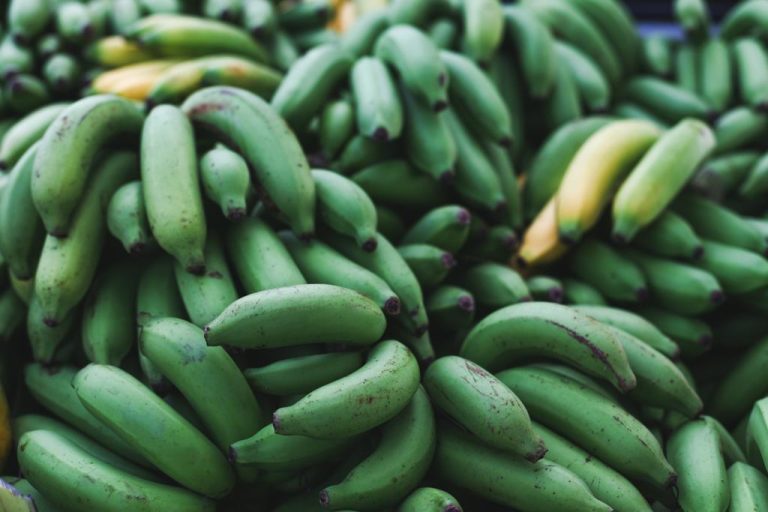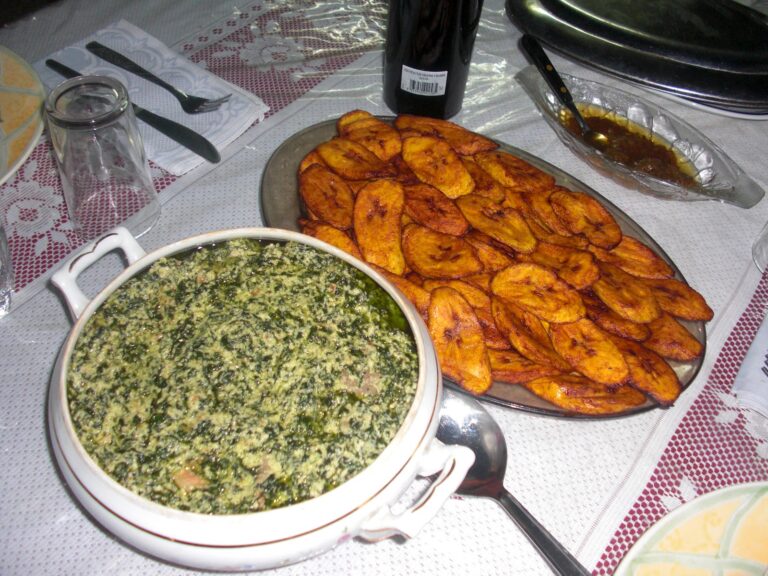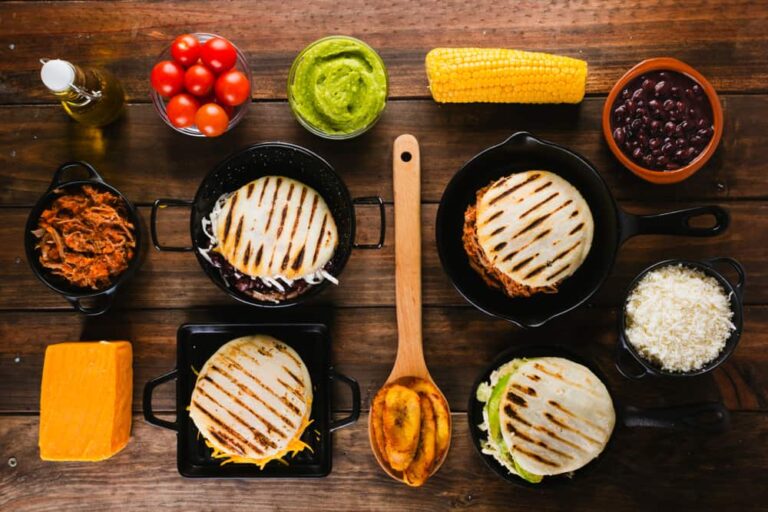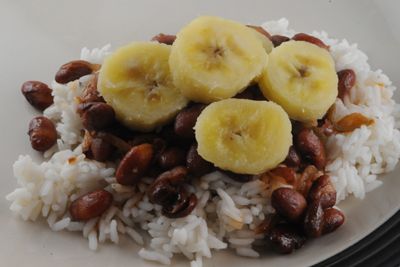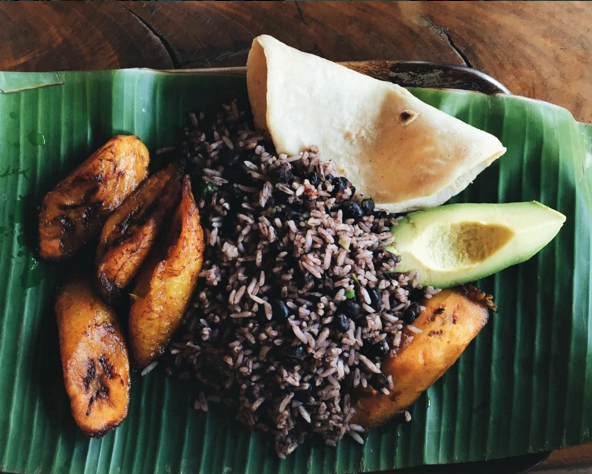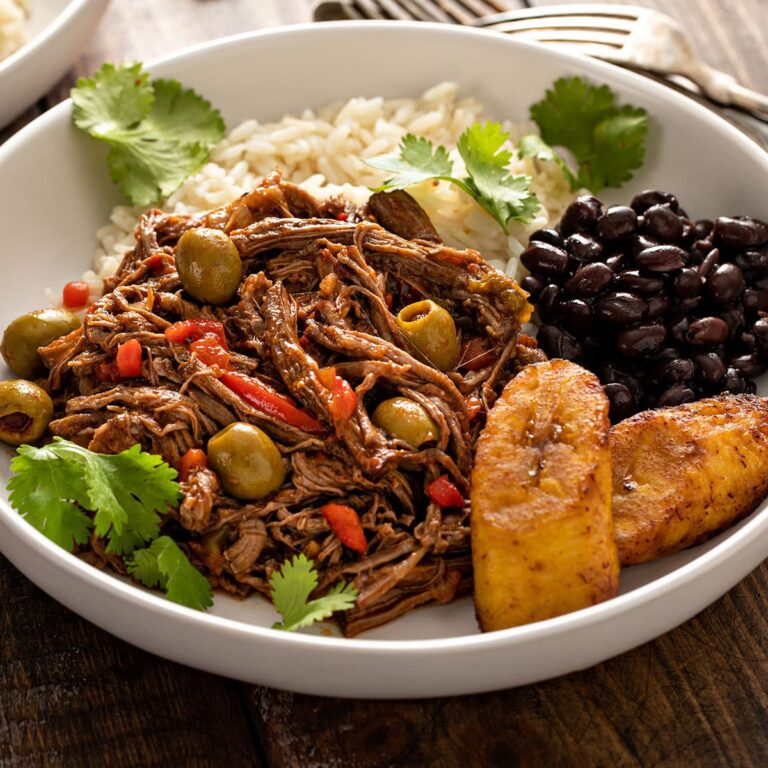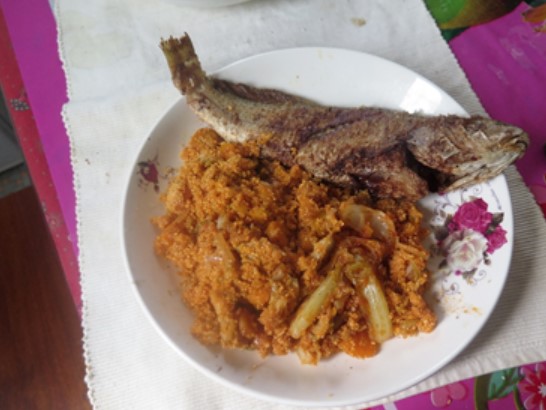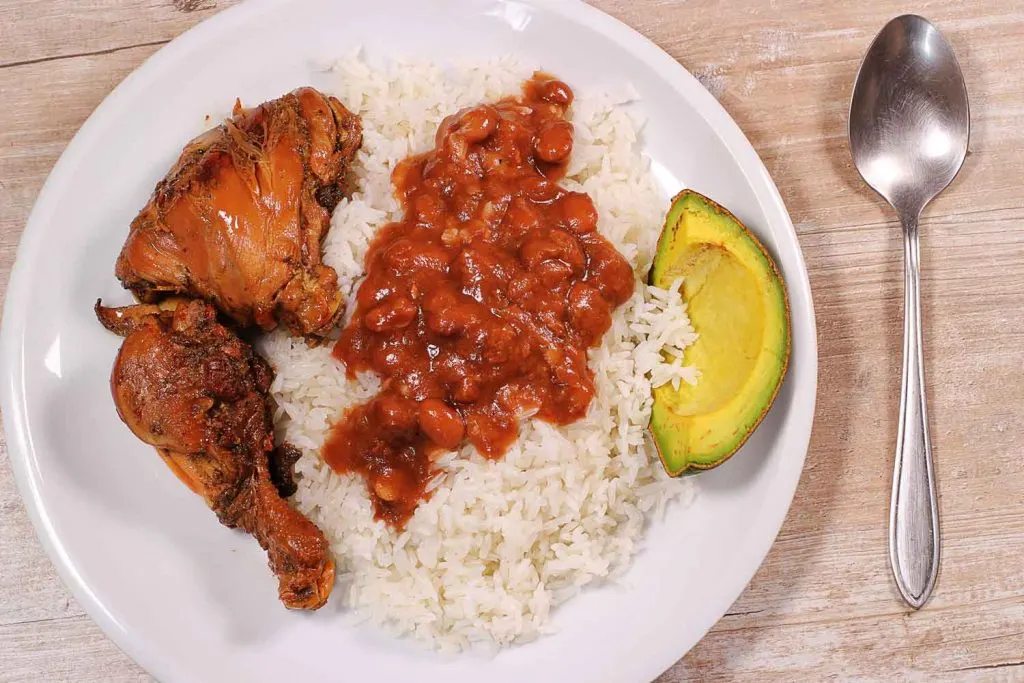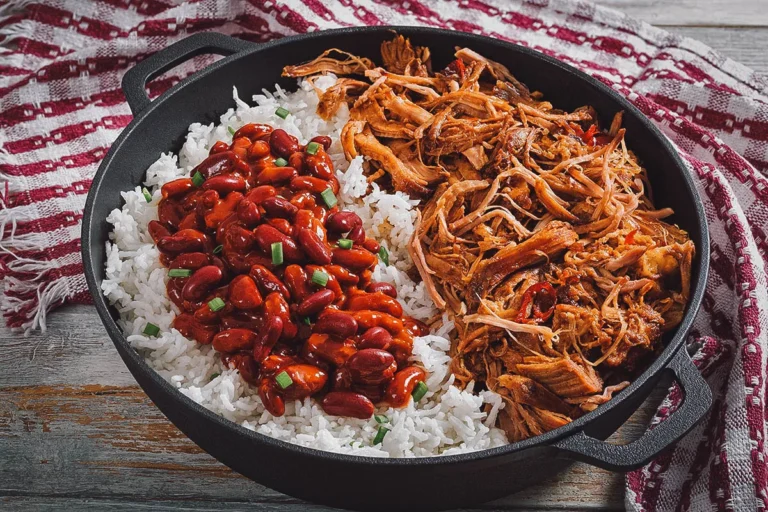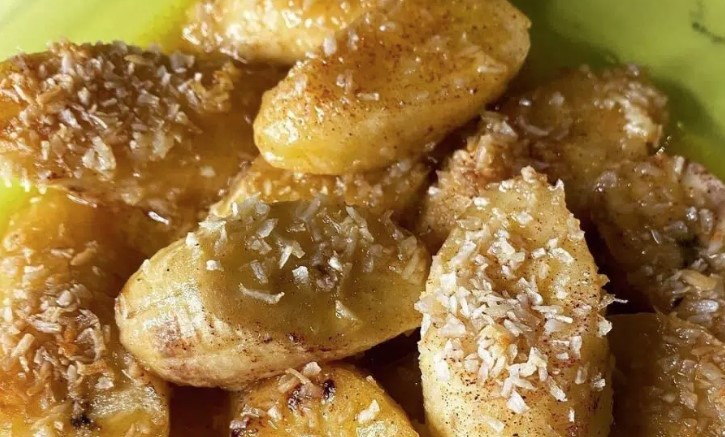Maybe you’ve seen them before: green and yellow bananas that are very similar to conventional bananas, but look a bit larger and more angular. We explain what plantains are, what is important when it comes to storage and present two suitable recipes.
What makes plantains different from regular bananas?
Plantains are also known as plantains or vegetable bananas. The counterpart to this are fruit bananas – yellow, sweet bananas that most of us are familiar with. The two varieties are similar in shape, but the plantain is usually slightly larger and thicker. But there are other differences:
In terms of taste, fruit and vegetable bananas hardly resemble each other. Depending on the degree of ripeness, plantains have a floury consistency and a neutral taste. That is why they are often compared to potatoes. They are also used in the green-yellow state in a similar way to potatoes, for example in soups or as a puree. After a while, the bananas turn from green to yellow before finally turning black. Black plantains are mild and sweet and are best used in desserts and sweet dishes.
Plantains are more difficult to peel than conventional bananas, especially at first, due to their firm skin. You should always use a knife to peel green and yellow plantains. To do this, first remove the ends and then cut the banana lengthwise before peeling off the skin.
Unlike fruit bananas, you should only eat this variety raw when it is fully ripe.
Unripe plantains can be processed into flour, which is a gluten-free alternative to regular flour.
Fried Plantains: A Recipe
For this recipe you need:
2 plantains (the riper they are, the sweeter they taste)
Olive oil, sunflower oil or vegan butter
1 pinch of salt
optionally:
2 tbsp sugar
vanilla sugar
Cinammon
How to prepare fried plantains:
Peel the plantain and cut it into slices. The cut can run slightly diagonally.
Heat the oil or vegan butter in a pan.
Fry the banana slices on both sides until they turn golden brown. Sprinkle some salt over the plantains.
If you want to sweeten the bananas additionally, sprinkle some sugar on top. If you like, mix the sugar with some cinnamon and vanilla sugar as well. After about 30 seconds, the sugar should caramelize.
Take the finished fried plantains out of the pan and let the oil drip off a little.
The fried plantain goes well as a side dish with rice or black beans, but also tastes great on its own as a snack or dessert. For a savory version, use green plantains and then season them with salt, pepper, chilli powder or paprika powder.
This is how you prepare plantain puree
For two servings of plantain puree you need:
2 green plantains
2-3 onions
3 tablespoons vegetable margarine
2 tablespoons oil
salt and pepper
The preparation:
Peel the plantains and cut them into chunks.
Boil them in salted water for 20-30 minutes until tender.
Meanwhile, peel the onions and cut them into rings.
Blend the plantains with the margarine to a creamy puree. Alternatively, you can use a potato masher for this. If the consistency of the puree is too thick for you, add some water or plant drink. Season the puree with salt and pepper.
Heat the oil in a pan and sauté the onion rings for a few minutes.
Finally, garnish the finished plantain puree with the onion rings.
Plantains: where to buy them and how sustainable they are
Plantains are mainly grown in South America, for example in Colombia, and in African countries such as Uganda or Ghana. But Malaysia and India are also cultivation areas. The vegetable banana therefore has to travel long distances before you can buy it here in the Asian shop or in well-stocked supermarkets. The plantain does not have a good ecological balance.
Similar to fruit bananas, working conditions on the plantations for plantains are often poor. We therefore recommend, if you have the opportunity, to buy the ingredient in organic quality and with a fair trade seal. You can also prepare some recipes with sweet potatoes instead of plantains. But this is only a more sustainable alternative if you get the sweet potatoes from regional cultivation.
Plantains ripen faster at higher temperatures. You should never store them in the refrigerator; a place protected from light at room temperature is better.

